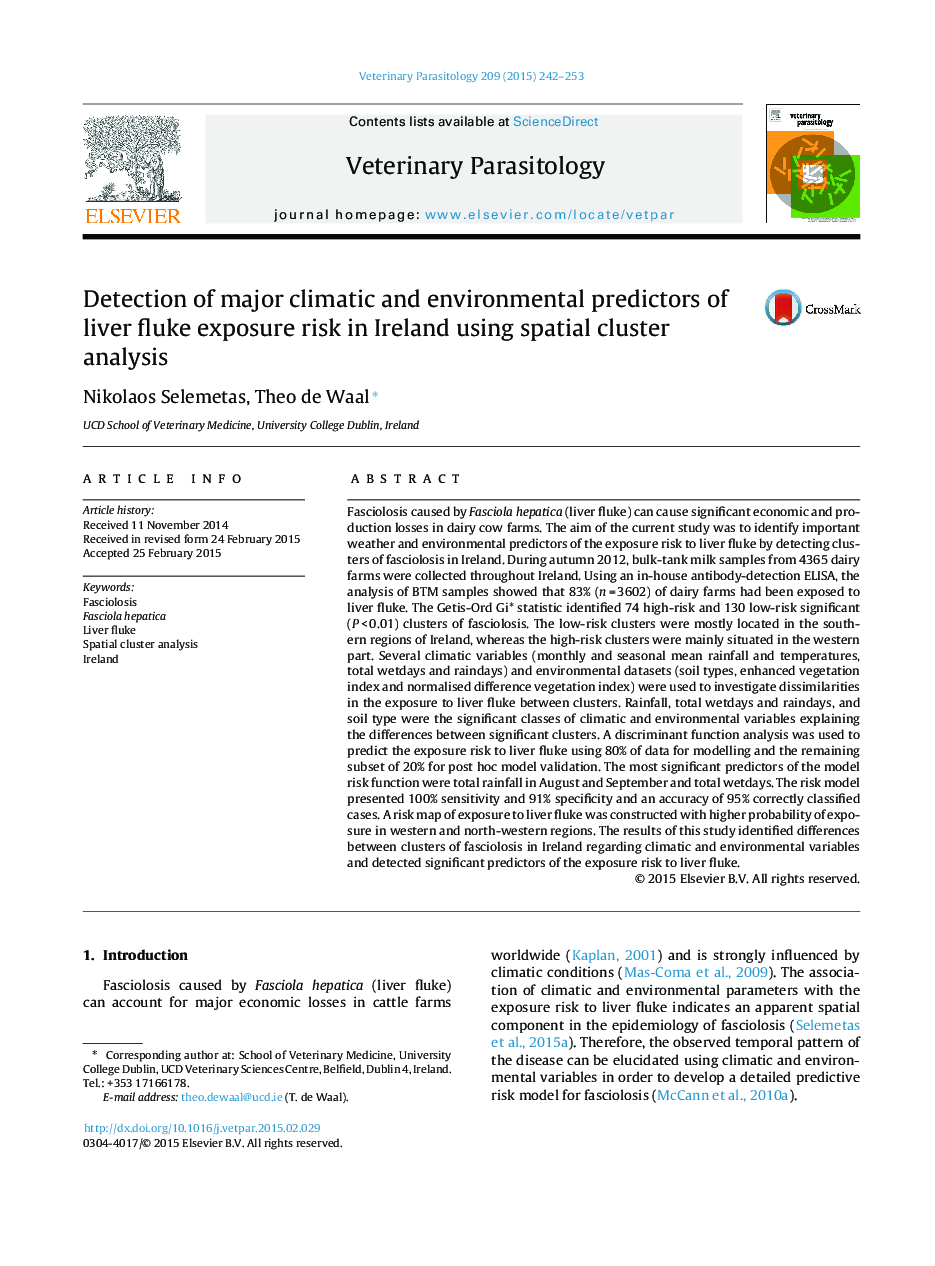| کد مقاله | کد نشریه | سال انتشار | مقاله انگلیسی | نسخه تمام متن |
|---|---|---|---|---|
| 5802724 | 1555672 | 2015 | 12 صفحه PDF | دانلود رایگان |
- 83% of Irish dairy farms had been exposed to liver fluke.
- Significant (PÂ <Â 0.01) high-risk and low-risk clusters of fasciolosis were detected.
- Clusters differed in rainfall, total wetdays and raindays, NDVI, EVI and soil type.
- A predictive risk model based on climatic and environmental factors was developed.
- Higher risk of exposure to liver fluke was found in western and north-western areas.
Fasciolosis caused by Fasciola hepatica (liver fluke) can cause significant economic and production losses in dairy cow farms. The aim of the current study was to identify important weather and environmental predictors of the exposure risk to liver fluke by detecting clusters of fasciolosis in Ireland. During autumn 2012, bulk-tank milk samples from 4365 dairy farms were collected throughout Ireland. Using an in-house antibody-detection ELISA, the analysis of BTM samples showed that 83% (n = 3602) of dairy farms had been exposed to liver fluke. The Getis-Ord Gi* statistic identified 74 high-risk and 130 low-risk significant (P < 0.01) clusters of fasciolosis. The low-risk clusters were mostly located in the southern regions of Ireland, whereas the high-risk clusters were mainly situated in the western part. Several climatic variables (monthly and seasonal mean rainfall and temperatures, total wetdays and raindays) and environmental datasets (soil types, enhanced vegetation index and normalised difference vegetation index) were used to investigate dissimilarities in the exposure to liver fluke between clusters. Rainfall, total wetdays and raindays, and soil type were the significant classes of climatic and environmental variables explaining the differences between significant clusters. A discriminant function analysis was used to predict the exposure risk to liver fluke using 80% of data for modelling and the remaining subset of 20% for post hoc model validation. The most significant predictors of the model risk function were total rainfall in August and September and total wetdays. The risk model presented 100% sensitivity and 91% specificity and an accuracy of 95% correctly classified cases. A risk map of exposure to liver fluke was constructed with higher probability of exposure in western and north-western regions. The results of this study identified differences between clusters of fasciolosis in Ireland regarding climatic and environmental variables and detected significant predictors of the exposure risk to liver fluke.
Journal: Veterinary Parasitology - Volume 209, Issues 3â4, 30 April 2015, Pages 242-253
